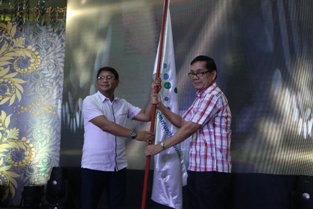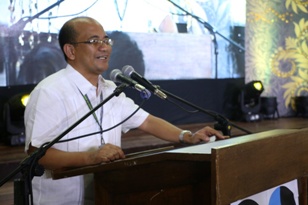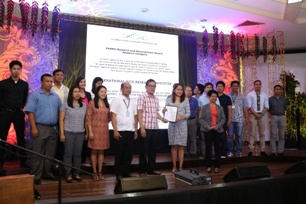 The 2016 National Science and Technology Week (NSTW), as celebrated in four science communities and 16 regional offices of the Department of Science and Technology, officially winded up on July 29 at the Philippine Council for Agriculture, Aquatic and Natural Resources Research and Development of the Department of Science and Technology (DOST-PCAARRD) complex.
The 2016 National Science and Technology Week (NSTW), as celebrated in four science communities and 16 regional offices of the Department of Science and Technology, officially winded up on July 29 at the Philippine Council for Agriculture, Aquatic and Natural Resources Research and Development of the Department of Science and Technology (DOST-PCAARRD) complex.
Celebrated in the tradition of SyenSaya, the Los Baños science community, through its Los Baños Science Community Foundation, Inc. (LBSCFI), formally closed the five day celebration with the awarding ceremonies in recognition of exceptional research and development works.
Formally recognized were the papers Mapping and Monitoring Rice Areas in the Philippines: the Prism Project Experience of the International Rice Research Institute (IRRI) and the Bio-ecological Characteristics of Migratory Waterbirds at Priority Wetlands in Relation to Climate Change of the Ecosystem Research and Development Bureau (ERDB).
The said papers were awarded the Philippine Agriculture and Resources Research Foundation, Inc. (PARRFI) Research and Development award and the F.S. Pollisco Award, respectively.
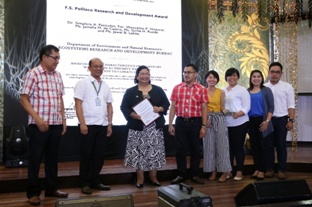 Two new LBSCFI awards, the Youth Science award and the Outstanding Research for Los Baños Development award, were also launched during the closing ceremonies.
Two new LBSCFI awards, the Youth Science award and the Outstanding Research for Los Baños Development award, were also launched during the closing ceremonies.
Also highlighting the closing ceremonies was the turnover of LBSCFI stewardship by its outgoing President, Dr. Casiano S. Abrigo, Jr. of the UPLB Foundation, Inc. to Dr. Alexander R. Madrigal of the Department of Science and Technology, Region lV-A.
Jim Leandro Cano, Philippine Country Representative of the Young Professionals for Agricultural Development (YPARD) keynoted the event.
Cano underscored the important role of science and technology institutions and their partners in changing the society through productive research and development initiatives, including the prompt delivery of their results to intended beneficiaries.
“Lack of knowledge is the cause of suffering among many of our people. The best measure of success of research is the number of lives that we have uplifted with the research output that we have developed,” Cano said.
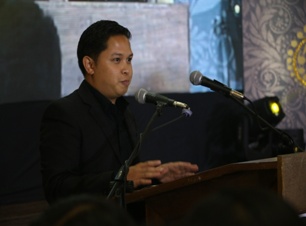 Dr. Danilo C. Cardenas, DOST-PCAARRD Deputy Executive Director for Administration Resources Management and Support Services (ARMSS), found much significance in the holding of the NSTW this year being the first among several things.
Dr. Danilo C. Cardenas, DOST-PCAARRD Deputy Executive Director for Administration Resources Management and Support Services (ARMSS), found much significance in the holding of the NSTW this year being the first among several things.
This year’s NSTW was the first to be held simultaneously in several locations (the four science communities in Bicutan, Taguig; Los Baños, Laguna; Quezon City; Manila, and 16 DOST Regional Offices) so that the DOST and its various agencies could efficiently reach its clients.
For the first time, SyenSaya was also celebrated during the NSTW and was held outside the University of the Philippines Los Baños (UPLB).
More than 7,000 guests from various organizations, including the academe, joined the event at the PCAARRD Complex which featured the DOST-PCAARRD Innovation and Technology Center (DPITC) as a venue for showcasing of agri-aqua technologies following its initial opening in March this year for the SIPAG FIESTA.
Dr. Reynaldo V. Ebora, DOST-PCAARRD Acting Executive Director, in his closing remarks lauded LBSCFI’s common effort, which has drawn the organization to a higher level of cooperation, commitment, and aspirations for the common good.
Ebora summed up LBSCFI’s numerous accomplishments in terms of bringing science to the people of Los Baños as one of the tools of livelihood opportunities and for having helped in instilling in the youth the love for science.
Ebora challenged the Los Baños Science Community to explore the endless frontier of science as a source of vast opportunities for the Filipinos, particularly in determining what aspect of human activity can be made more convenient and productive through innovations.
“PCAARRD continually rises to the challenge of community empowerment by addressing poverty through the needed science and technology interventions for the agriculture, aquatic and natural resources sectors,” Ebora said.
